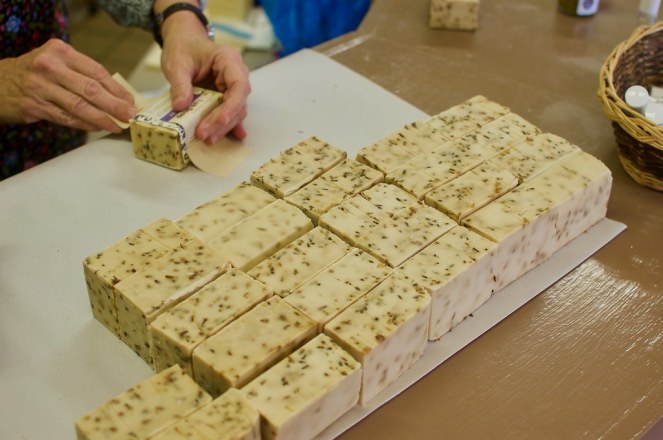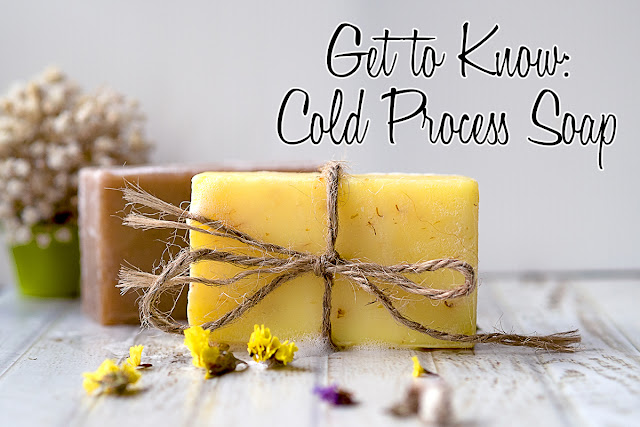
Cold process soap is known as ‘natural soap’. It is made by combining oils and sodium hydroxide, through the cold process. This cold process denotes the lacking presence of heat when making soap.
The mixture of sodium hydroxide with a type of liquid (henceforth known as ‘lye’, as it is defined that ‘lye’ is an aqueous solution of sodium hydroxide or potassium hydroxide) is required for making soap. It is not possible to make soap without lye as lye is required to react with the oils to change them into soap. Without lye, you will only have a bunch of oils floating around in water.
*Melt and Pour soap has already been pre-saponified. The difference between a melt and pour soap and a cold process soap is that for cold process soap, one can customize all ingredients. Also, Melt and Pour soaps are usually made from a detergent formulated, cleansing cosmetic base and thus, have few SLS-free and all-natural options.*Sodium hydroxide is used to makes bar soap. It forms a solid, opaque bar soap. Potassium hydroxide makes liquid soap, which is flowing, clear, or translucent. To read more about lye and how to handle it with proper care, check out this post by Soap Queen!*There are also many kinds of oil. Soft oil (like rice bran oil and olive oil) will cause a soap to be mushy/soft. Hard oil (like palm oil and coconut oil) will harden it. Making soap requires a good balance of oils!
The process of lye reacting with oils and thus, resulting in soap, is a chemical reaction called saponification. Glycerin is also produced during this process and if you’ve super-fatted the soap, you will have unsaponified oil too. Saponification usually takes 24-48 hours to occur. However, it should be noted that saponification can be affected by surrounding temperature.
*Sodium hydroxide/potassium hydroxide should slowly and gradually be added into liquid and NOT the other way around!
 Heat quickens saponification. So, if the lye is extremely hot, it can cause the saponification process to speed up dramatically. This is problematic if the soap design involves a lot of layers, swirls and such. If the lye solution is too cold, it can solidify the oils and butters upon contact. It should be noted, however, that soaping temperature is based entirely on personal preference and will vary according to recipe. Thermometers are used based on the recipe/method/situation in cold process soap.
Heat quickens saponification. So, if the lye is extremely hot, it can cause the saponification process to speed up dramatically. This is problematic if the soap design involves a lot of layers, swirls and such. If the lye solution is too cold, it can solidify the oils and butters upon contact. It should be noted, however, that soaping temperature is based entirely on personal preference and will vary according to recipe. Thermometers are used based on the recipe/method/situation in cold process soap.*The mixture of lye and oils can only be poured into mold when trace is present. Trace is the point when the oils and lye water are emulsified. At thin trace, there will be no streaks of oil and the soap will be the consistency of thin cake batter. Thus, oils separation cannot occur.
Bringing back the fact that saponification can be affected by surrounding temperate, the time during which saponification occurs is a crucial moment. Soap created with average or cool soaping temperatures can become quite hot if left in a warm or hot room after pouring into the mold. Hot room temperatures can cause soap to go through the gel phase or even overheat. Soaps also sweat due to high humidity environments and overheating. It is normal and will accumulate on the soap. On the other hand, when soap is on the cooler side, soda ash can form due to the natural process of unsaponified lye reacting with carbon dioxide.

After the saponification process is the curing process. Leaving the soap to cure allows the excess moisture to evaporate. It also results in a harder and milder bar of soap which also lasts longer. A cold process soap is at its best after at least a month of curing, and if you can leave it to cure for even longer, then it’ll be even better.
We hope this helps you understand Cold Process Soap better 

References:
- Coss, Melinda, Gourmet Soaps Made Easy (Cincinnati, Ohio: North Light Books, 2001).
- “Back To Basics: Lye Safety Guide – Soap Queen”, Soap Queen, 2015 <https://www.soapqueen.com/bath-and-body-tutorials/tips-and-tricks/back-to-basics-lye-safety-guide/> [Accessed 14 April 2019].



No comments:
Post a Comment